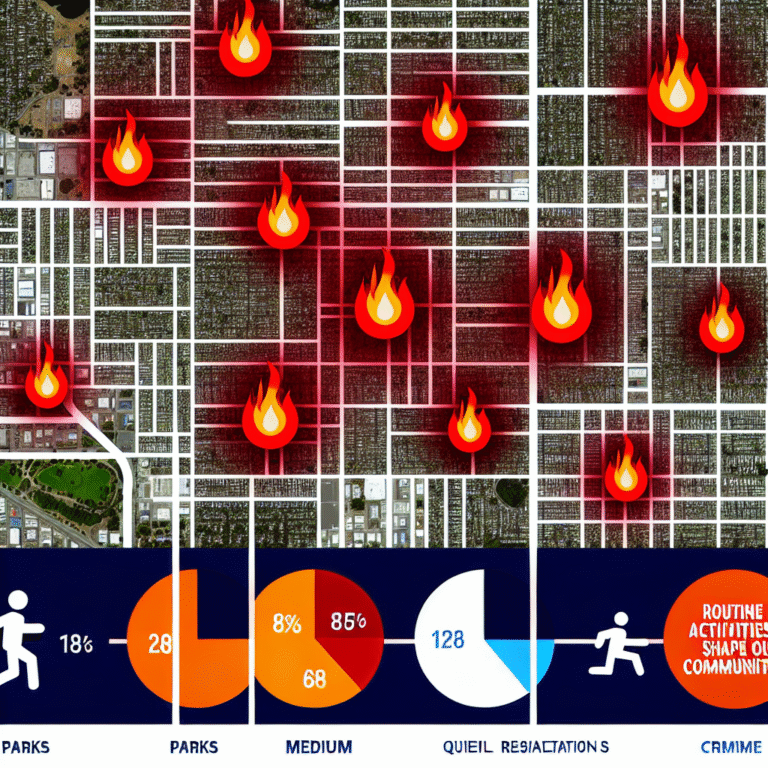
Introduction
As our world becomes hyper-connected, the digital domain increasingly reflects our complex human nature. From identity theft to hacking and online fraud, cybercrime is a pervasive issue that raises pressing questions: What drives individuals to engage in such crimes? Understanding these motivations is crucial not only for law enforcement but for anyone who uses digital platforms. In this article, we delve deep into the psychology of cybercrime, exploring why people commit online crimes, the underlying motivations, and the broader implications for society.
Understanding the Facets of Cybercrime
Cybercrime encompasses a wide range of illegal activities conducted online. To comprehend the psychology behind cybercriminal behavior, we need to dissect the categories of cybercrime:
- Identity Theft: Fraudulently obtaining personal information to impersonate another person.
- Hacking: Unauthorized access to systems or networks to steal or manipulate data.
- Online Fraud: Deceptive practices aimed at extracting money or sensitive information.
- Cyberbullying: Using online platforms to harass, intimidate, or demean others.
Each type of cybercrime offers insights into the motivations and psychological states of those who commit these acts.
Why Do People Commit Cybercrime?
1. Financial Gain: The Most Common Motivator
One of the primary drivers behind cybercriminal activity is financial gain. The anonymity of the internet allows individuals to exploit vulnerabilities without facing immediate repercussions. According to a report by the Internet Crime Complaint Center, financial losses due to cybercrime exceeded $4.2 billion in 2020 alone.
Case Study: The Target Data Breach
In 2013, hackers stole credit card information from over 40 million customers of Target. The breach was perpetrated by a group motivated primarily by financial gain. By infiltrating Target’s systems through a third-party vendor, they exemplified how cybercriminals exploit vulnerabilities for monetary benefits.
Analysis: This case illustrates the lengths to which individuals will go to secure financial advantages and the reliance on complex systems that create exploitable points.
2. Thrill-Seeking: The Psychological High
Not all cybercrimes are driven by monetary gain. Some individuals engage in cybercrime for the thrill, akin to a person who takes risks for an adrenaline rush. This behavior is often linked to a desire for power, control, or recognition.
Case Study: Adrian Lamo
Adrian Lamo, known for hacking The New York Times and later exposing whistleblower Chelsea Manning, is a prime example. Lamo sought notoriety and a sense of belonging within hacker communities, demonstrating how thrill-seeking can lead to illegal activities.
Analysis: Lamo’s actions highlight the inherent psychological drive for recognition and the community aspect within the world of cybercrime—a place where the stakes are high, but so are the rewards of notoriety.
3. Ideological Beliefs: Hacktivism
Not all hackers operate out of self-interest; some align themselves with social or political causes. This form of hacking, known as hacktivism, marries ideology with technology.
Case Study: Anonymous
The collective known as Anonymous has become synonymous with hacktivism, targeting organizations and governments that they believe promote injustice. Their campaigns, which often aim to raise awareness for various social issues, showcase how motivation can extend beyond personal gain.
Analysis: Understanding hacktivists requires exploring their ideological backgrounds and the belief systems driving their actions. This not only challenges conventional definitions of criminal behavior but also speaks to the motivations rooted in societal advocacy.
4. Socioeconomic Factors: A Catalyst for Crime
People from various socioeconomic backgrounds commit cybercrimes, though individuals from lower-income brackets may feel particularly pressured to resort to these actions as a means of survival or financial relief.
Case Study: The “Yahoo! 2013 Data Breach” Incident
The 2013 data breach at Yahoo! exposed data from over 3 billion accounts and was believed to be orchestrated by a group of hackers connected to organized crime in Eastern Europe, driven by economic necessity.
Analysis: This scenario demonstrates how economic desperation can lead individuals down a path of cybercrime, shaping their motivations and actions in the digital space.
Psychological Profiles of Cybercriminals
Understanding the psychology behind cybercrime requires looking at the profiles of those who commit these acts. Research identifies several key traits often found in cybercriminals:
- Low Impulse Control: Many cybercriminals exhibit impulsive behavior, often acting without fully considering the consequences of their actions.
- Need for Revenge or Validation: Individuals may engage in cybercrime as a form of retribution or to validate their skills in hacking.
- Narcissism and Psychopathy: Certain psychological profiles may indicate higher narcissistic or psychopathic traits, leading to disregard for laws or the well-being of others.
The Role of Technology in Shaping Behavior
The internet enables anonymity and detachment from consequences, making it easier for individuals to justify criminal behavior. Cybercriminals often feel a sense of invulnerability when masked by technology, leading to increased criminal activity.
| Psychological Factor | Description |
|---|---|
| Impulse Control | Difficulty in delaying gratification. |
| Narcissism | A belief in one’s superiority over others. |
| Anonymity | Feeling invulnerable due to online personas. |
| Low Empathy | Lack of concern for victims and outcomes. |
The Impact of Cybercrime on Society
1. Economic Consequences
Cybercrime has far-reaching economic implications not only for the victims but also for the companies targeted. Organizations lose billions of dollars annually, and the cost of security measures continues to escalate.
2. Psychological Effects on Victims
Victims of cybercrime experience a range of psychological effects, including anxiety, depression, and feelings of helplessness. The violation of privacy and trust can lead to long-term emotional trauma.
3. Legal Repercussions and Law Enforcement Challenges
Law enforcement agencies face significant challenges in combating cybercrime due to the rapid evolution of technology. The anonymity of the internet and jurisdictional boundaries complicate legal responses.
Strategies to Combat Cybercrime
While understanding the psychology of cybercriminals is essential, proactive measures can help mitigate risks. Here are some essential strategies:
- Education and Awareness: Informing users about cyber threats and encouraging safe online practices.
- Strengthening Regulations: Governments need to create robust laws and frameworks to address the challenges posed by cybercrime.
- Promoting Ethical Hacking: Encouraging skilled individuals to contribute positively to cybersecurity efforts.
- Mental Health Resources: Providing support for those with psychological tendencies that may lead to cybercriminal behavior.
Conclusion
The psychology of cybercrime is intricate and multifaceted. By exploring the motivations behind such actions, we can better comprehend the underlying factors contributing to online criminal behavior. Armed with this understanding, society can take meaningful measures to combat cybercrime and empower individuals to navigate the digital landscape safely.
Taking action starts with awareness and education. As individuals, we must remain vigilant, continually educate ourselves about the risks involved in the digital realm, and advocate for systemic changes that address the root causes of cybercrime. By fostering a culture of responsibility and ethical behavior, we can help mitigate the impact of cybercrime on society.
FAQs
1. What are the most common types of cybercrime?
Answer: Common types include identity theft, hacking, online fraud, and cyberbullying.
2. Why is anonymity a significant factor in cybercrime?
Answer: Anonymity provides a shield for individuals, allowing them to commit crimes without facing immediate repercussions.
3. How do socioeconomic factors contribute to cybercrime?
Answer: Economic pressures can drive individuals from underprivileged backgrounds to resort to cybercrime as a means of survival.
4. What psychological traits are common among cybercriminals?
Answer: Many exhibit low impulse control, narcissism, and a lack of empathy, which influences their decision-making.
5. What can individuals do to protect themselves from cybercrime?
Answer: Careful online behavior, utilizing strong passwords, and educating oneself about threats are crucial for protection against cybercrime.
In this exploration of the psychology of cybercrime, we’ve lifted the veil on what drives individuals to commit online crimes. By understanding these motivations, we can work collectively to prevent cybercriminal behavior and cultivate a more secure cyberspace.















